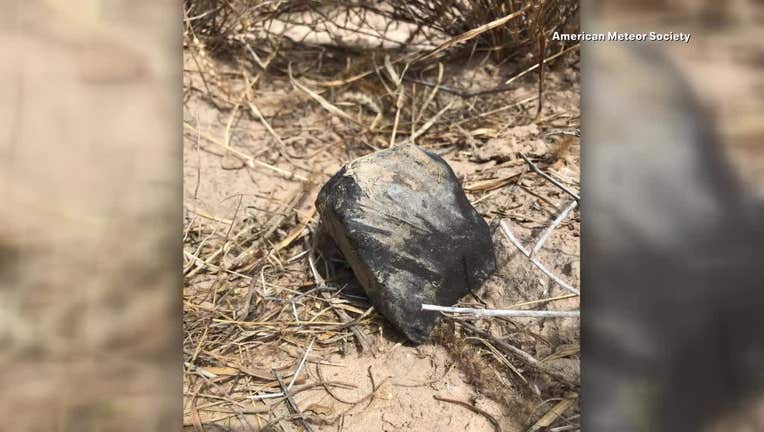It’s not every day that you get to have the same point of view of the dinosaurs, staring up at the sky and seeing fire at loud “booms” sound and the ground shakes from being hit with rocks from outer space. But some residents of South Texas had just such an experience on Wednesday.

It was then that meteors ripped through the atmosphere over McAllen and slammed into the ground, startling the residents of the town with a sonic boom and the ground shaking. One of the meteors that impacted the ground weighed a hefty 1,000 pounds and was two feet in diameter.
NASA, in its report on the incident, noted that “The angle and speed of entry, along with signatures in weather radar imagery, are consistent with other naturally occurring meteorite falls. Radar and other data indicate that meteorites did reach the ground from this event.”

Continuing, the same NASA report went on to note that “Although meteorites tend to hit Earth’s atmosphere at high speeds, they slow as they travel through the atmosphere, breaking into small fragments before hitting the ground. Meteorites cool rapidly and generally are not a risk to the public.”
NASA also encouraged those who find fragments of the meteorite to turn them in to the Smithsonian so that they can be studied, saying “When samples such as the remnants of this event are collected and studied, they enhance our understanding of the origin and evolution of our solar system and our local natural space debris environment.”
Watch the incident here:
The local sheriff, Sheriff Eddie Guerra, posted about hte incident on Twitter, saying “Was informed by my Federal partners that Houston Air Traffic Control received reports from two aircrafts that they saw a meteorite west of McAllen. Where the exact point of impact is unknown. No reports of any damage in that area has been received.”
The US National Weather Service Brownsville posted about the matter on Facebook, saying:
We have received reports of a possible meteor/fireball in the sky earlier this evening west of McAllen. One of the tools we use at the NWS is called the Geostationary Lightning Mapper (GLM). The GLM sensor is located on NOAA’s GOES-East and GOES-West satellites. GLM measures total lightning as observed from space. The GLM measures emitted light and other optical properties. There was no ongoing thunderstorm activity in the Valley but the GLM still detected a signal at around 523 PM CST Feb 15 per the images below. The product below is called Flash Extent Density and is one of the more common GLM products.
KIIITV noted that if you do find a meteorite, holding it with gloves rather than in your hands is best because the oils on your hands can damage the rock. In its words:
NASA said that it is best not to touch freshly fallen meteorites with your hands as you may damage the rock.
“Oils and microbes from your skin will slowly degrade the surface of a meteorite, dulling the fusion crust, contaminating the meteorite, and promoting rust,” NASA reports.
Instead, the handling of meteorites should be done with gloves, tongs, or new aluminum foil. NASA scientists said meteorites should be kept clean and dry and can be wrapped in aluminum foil and sealed in a zip-lock bag to offer it protection from humidity.

Photo shows a meteorite that was discovered in Starr County, Texas. (American Meteor Society)
Part of the meteor that shook South Texas last week has been found
Search crews found one of the small meteorites in Starr County.
The American Meteor Society posted a picture of it on social media, saying it was the third piece found around the world in three days.
Anyone who finds a meteorite is urged to contact the Smithsonian Institution, so it can be studied.
Source: theamericantribune.com








